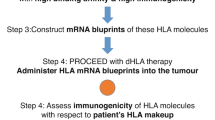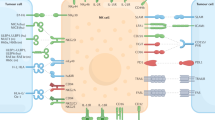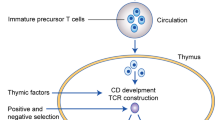Abstract
CYTOTOXIC activity by lymphocytes has attracted considerable interest because of its possible role in the rejection of grafted tissues and neoplastic cells. Damage to target cell caused by lymphoid cells was first demonstrated in 1960 by Govaerts1, and there were several subsequent reports of immunologically specific cytotoxicity towards target cells by lymphoid cells from sensitized donors. These have recently been reviewed extensively2. The situation was complicated when cytotoxic activity by lymphocytes from apparently unsensitized donors was demonstrated in 1964 by Holm et al.3, in cultures of lymphoid cells and target cells when phytohaemagglutmin (PHA) was incorporated into the medium. Holm and Perlmann5 later showed that several other circumstances could lead to immunologically non-specific cytotoxic activity by lymphocytes. The induction of cytotoxicity in all these systems seemed to correlate well with increased mitogenic activity in the lymphocyte population tested. Recently it has been shown that immunologically nonspecific cytotoxic activity can be evoked from lymphocytes when the target cell antigens are complexed with certain antibody5–7. This effect has been demonstrated in a wide variety of species including man8, and does not seem to require the participation of complement components. We have previously reported that much of the immunologically specific target cell damage by lymphocytes in rats is dependent on immunoglobulin sensitization of target cells9. The sensitizing antibody, in this case, is synthesized by lymphocytes which are not themselves cytotoxic. Bubeník, Perlmann and Hašek10 have provided evidence that this mechanism brings about homograft rejection in donors made tolerant to graft antigens. Although there has been no report of antibody-induced cytotoxicity being associated with blast transformation, transformation in response to antigen-antibody complexes has been described11,12.
This is a preview of subscription content, access via your institution
Access options
Subscribe to this journal
Receive 51 print issues and online access
$199.00 per year
only $3.90 per issue
Buy this article
- Purchase on Springer Link
- Instant access to full article PDF
Prices may be subject to local taxes which are calculated during checkout
Similar content being viewed by others
References
Govaerts, A. J., J. Immunol., 85, 516 (1960).
Perlmann, P., and Holm, G., Adv. Immunol., 11, 117 (1969).
Holm, G., Perlmann, P., and Werner, B., Nature, 203, 841 (1964).
Lundgren, G., Collste, L., and Möller, G., Nature, 220, 289 (1968).
Holm, G., and Perlmann, P., J. Exp. Med., 125, 721 (1967).
MacLennan, I. C. M., Loewi, G., and Harding, B., Immunology, 18, 397 (1970).
Perlmann, P., and Perlmann, H., Cellular Immunology, 1 (in the press).
MacLennan, I. C. M., Loewi, G., and Howard, A., Immunology, 17, 897 (1969).
MacLennan, I. C. M., and Harding, B., Immunology, 18, 405 (1970).
Bubeník, J., Perlmann, P., and Hašek, M., Transplantation (in the press).
Bloch-Shtacher, N., Hirschhorn, K., and Uhr, J. W., Clin. Exp. Immunol., 3, 889 (1968).
Möller, G., Clin. Exp. Immunol., 4, 65 (1969).
Holm, G., Exp. Cell Res., 48, 334 (1967).
Lundgren, G., and Möller, G., Clin. Exp. Immunol., 4, 435 (1969).
Möller, E., J. Exp. Med., 126, 396 (1967).
Bolman, J. C., Cain, J. C., and Grindlay, J. H., J. Lab. Clin. Med., 33, 1349 (1948).
Lund, P., Biochem. J. (in the press).
Iversen, J. G., Exp. Cell Res., 56, 219 (1969).
Ruddle, N. H., and Waksman, B. H., J. Exp. Med., 128, 1267 (1968).
Granger, G., in Mediators of Cellular Immunity, 321 (Academic Press, London and New York, 1969).
Cerottini, J. C., Nordin, A., and Brunner, K. T., Nature, 227, 72 (1970).
Perlman, P., Nilsson, H., and Leon, M. A., Science, 168, 1112 (1970).
Author information
Authors and Affiliations
Rights and permissions
About this article
Cite this article
MACLENNAN, I., HARDING, B. Failure of Certain Cytotoxic Lymphocytes to respond mitotically to Phytohaemagglutinin. Nature 227, 1246–1248 (1970). https://doi.org/10.1038/2271246a0
Received:
Revised:
Issue Date:
DOI: https://doi.org/10.1038/2271246a0
This article is cited by
-
Splenic cellular responses in vitro after tumour-immunization
Experientia (1973)
-
Cytotoxic Lymphocytes from Rats depleted of Thymus Processed Cells
Nature New Biology (1971)
Comments
By submitting a comment you agree to abide by our Terms and Community Guidelines. If you find something abusive or that does not comply with our terms or guidelines please flag it as inappropriate.



